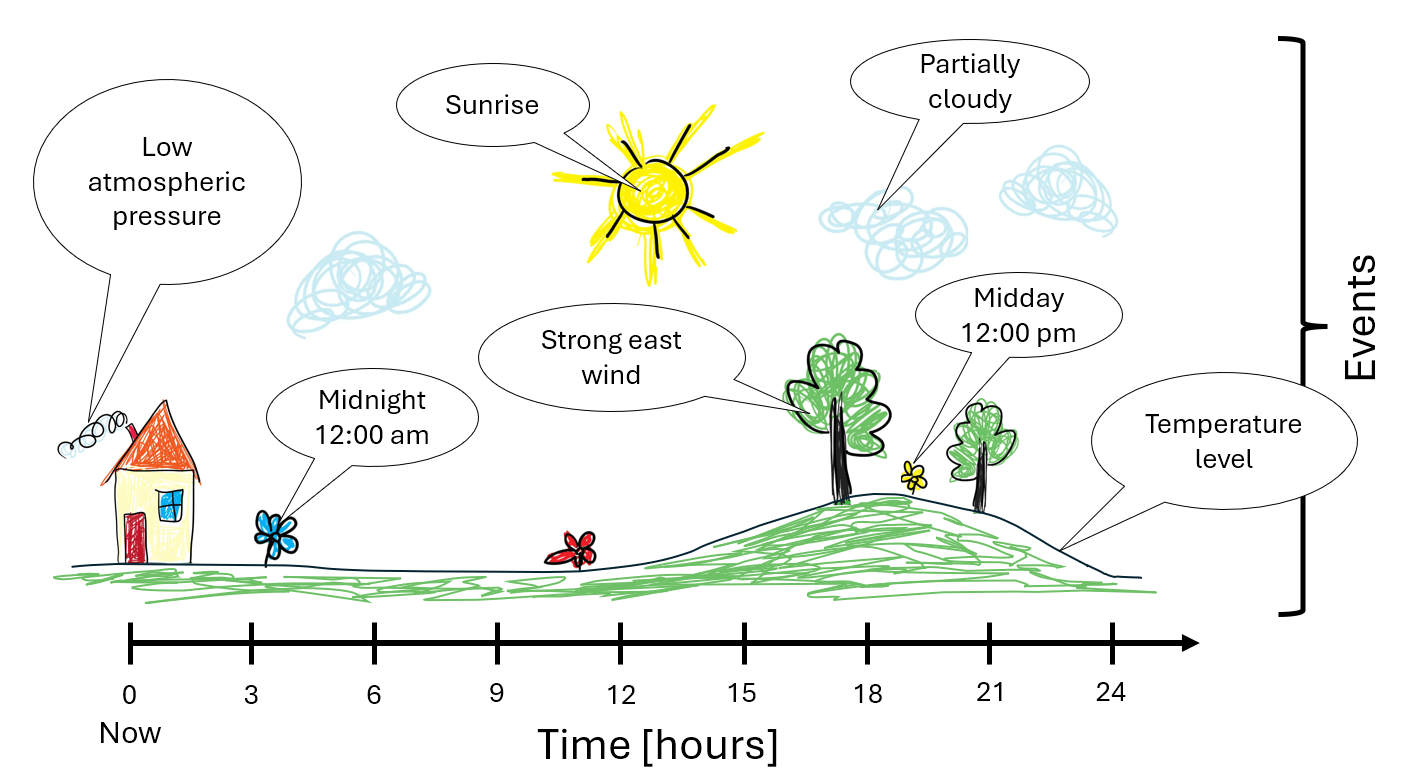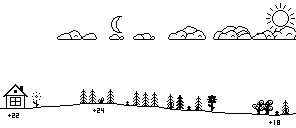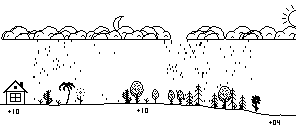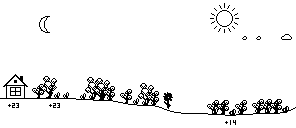Visualizing Weather Forecasts Through Landscape Imagery
Traditional weather stations often display sensor readings as raw numerical data. Navigating these dashboards can be overwhelming and stressful, as it requires significant effort to locate, interpret, and visualize specific parameters effectively.
Viewing a landscape image feels natural to the human eye. The calming effect of observing landscape elements reduces stress and requires minimal effort, allowing for a more relaxed visual experience.
The method below demonstrates how to encode weather information within a landscape image, with no or minimal reliance on numerical data.
The landscape depicts a small house in the woods. The horizontal axis of the image represents a 24-hour timeline, starting from the current moment on the left, marked by the house, and extending to the conditions of the next day on the right. Various landscape elements distributed along the vertical axis symbolize weather events and conditions. The further an event is from the present, the farther it is positioned to the right in the image.
The following information can be encoded within the landscape image:
- Time markers to simplify timeline navigation:
- Sunrise and sunset times
- Noon and midnight
- Weather forecast information:
- Wind direction and strength
- Temperature fluctuations
- Maximum and minimum temperature values
- Cloud cover
- Precipitation
- Current weather conditions:
- Temperature
- Atmospheric pressure
- Non weather events:
- Birthdays
- Holidays
The image generation code is written in Python using the Pillow library and is based on data from OpenWeather. The image is designed specifically for use on a 296x128 E-Ink display. The code tested on Python 3.9.
| Event image | Description |
|---|---|
 |
Sunrise |
 |
Sunset |
 |
Cloud cover |
 |
Current time position |
 |
Midnight |
 |
Midday |
 |
South wind |
 |
East wind |
 |
West wind |
 |
North wind |
 |
Rain |
./makevenv.sh
source .venv/bin/activate
makevenv.bat
.venv/Scripts/Activate
Update OWM_KEY variable in the secrets.py with your OpenWeather API key.
(optional) Change the coordinates in secrets.py to your location.
python run_test.py
python run_server.py
The hardware setup includes an ESP32 development board and 2.9inch E-Ink display module. Currently, the setup only displays an image sourced from the internet, updating every 15 minutes. It is uncertain whether the image generation code can be adapted for use with MicroPython on the ESP32 at this time.






